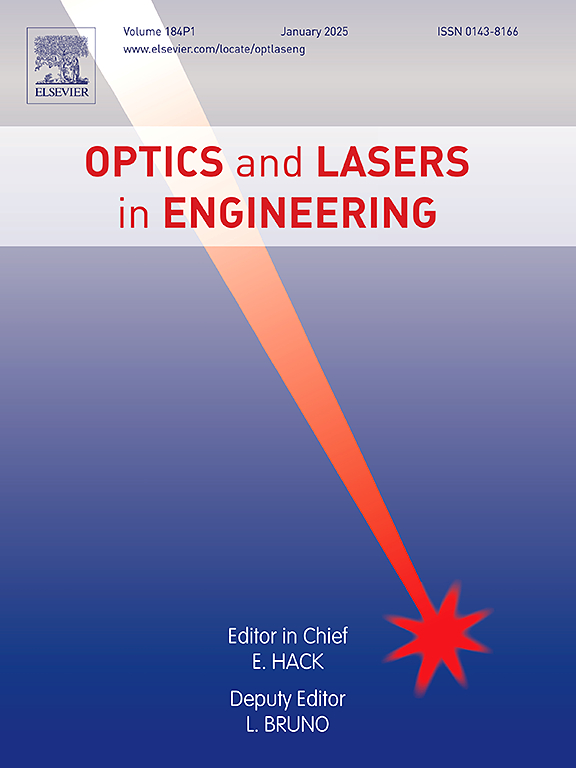Pixel-wise calibration for a multi-focus microscopic 3D imaging system
IF 3.7
2区 工程技术
Q2 OPTICS
引用次数: 0
Abstract
This paper presents a novel pixel-wise calibration method for a multi-focus microscopic structured light (MF-MSL) three-dimensional (3D) system with the camera being attached an electronically tunable lens (ETL). The method begins with a conventional stereo calibration performed at a selected focus. Next, a pixel-wise relationship between the continuous focus settings and corresponding phase values is established using a stationary white plane as the reference. By translating the white plane across the depth range defined by the ETL's continuous focus, a pixel-wise relationship between the phase difference (i.e., the deviation from the reference phase) and the 3D coordinates is derived. This process ultimately yields a direct mapping between the continuous focus values and 3D coordinates at each pixel. Since the proposed pixel-wise calibration method mitigates lens artifacts during focus variations, it greatly improved the calibration accuracy. Experimental results demonstrated that, comparing to the traditional stereo method, the proposed method reduced the root-mean-square error (rmse) by more than 50% for our 10× extended depth of field (DoF) system.
多焦点显微三维成像系统的像素级校准
本文提出了一种新的多焦显微结构光(MF-MSL)三维(3D)系统的逐像素标定方法,该系统的相机附有电子可调镜头(ETL)。该方法首先在选定的焦点处进行传统的立体校准。接下来,使用静止的白色平面作为参考,建立连续对焦设置与相应相位值之间的逐像素关系。通过在ETL连续聚焦定义的深度范围内平移白色平面,可以推导出相位差(即与参考相位的偏差)与3D坐标之间的逐像素关系。这个过程最终产生连续焦距值和每个像素的3D坐标之间的直接映射。由于所提出的逐像素校准方法减轻了焦点变化时的镜头伪影,因此大大提高了校准精度。实验结果表明,在10倍扩展景深(DoF)系统中,与传统立体成像方法相比,该方法的均方根误差(rmse)降低了50%以上。
本文章由计算机程序翻译,如有差异,请以英文原文为准。
求助全文
约1分钟内获得全文
求助全文
来源期刊

Optics and Lasers in Engineering
工程技术-光学
CiteScore
8.90
自引率
8.70%
发文量
384
审稿时长
42 days
期刊介绍:
Optics and Lasers in Engineering aims at providing an international forum for the interchange of information on the development of optical techniques and laser technology in engineering. Emphasis is placed on contributions targeted at the practical use of methods and devices, the development and enhancement of solutions and new theoretical concepts for experimental methods.
Optics and Lasers in Engineering reflects the main areas in which optical methods are being used and developed for an engineering environment. Manuscripts should offer clear evidence of novelty and significance. Papers focusing on parameter optimization or computational issues are not suitable. Similarly, papers focussed on an application rather than the optical method fall outside the journal''s scope. The scope of the journal is defined to include the following:
-Optical Metrology-
Optical Methods for 3D visualization and virtual engineering-
Optical Techniques for Microsystems-
Imaging, Microscopy and Adaptive Optics-
Computational Imaging-
Laser methods in manufacturing-
Integrated optical and photonic sensors-
Optics and Photonics in Life Science-
Hyperspectral and spectroscopic methods-
Infrared and Terahertz techniques
 求助内容:
求助内容: 应助结果提醒方式:
应助结果提醒方式:


